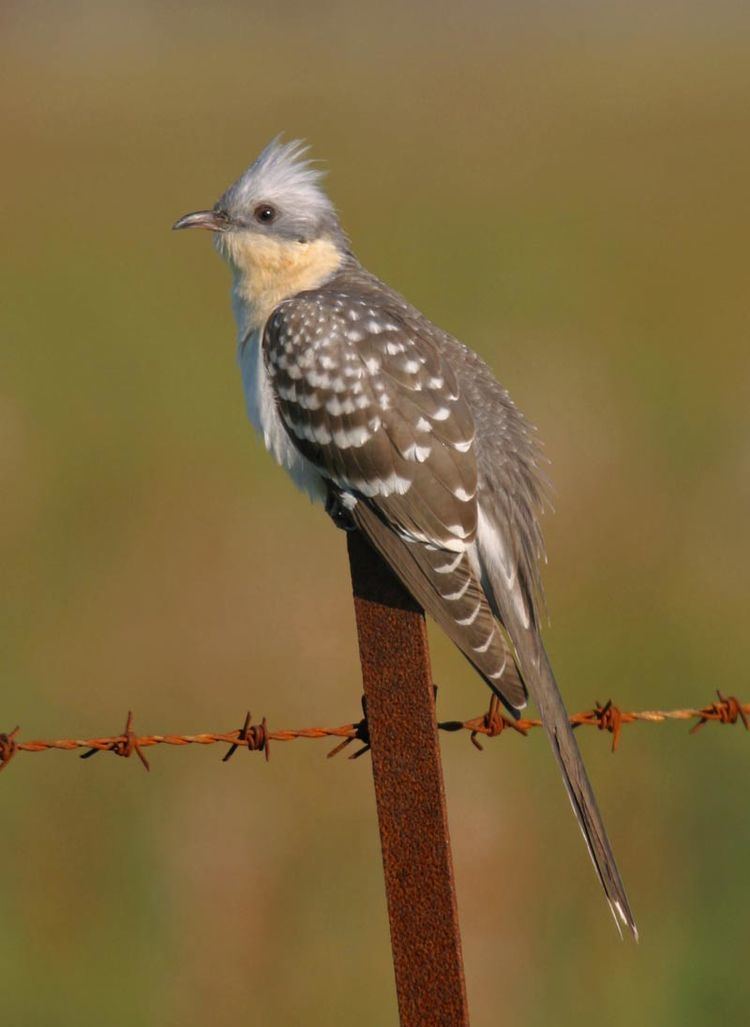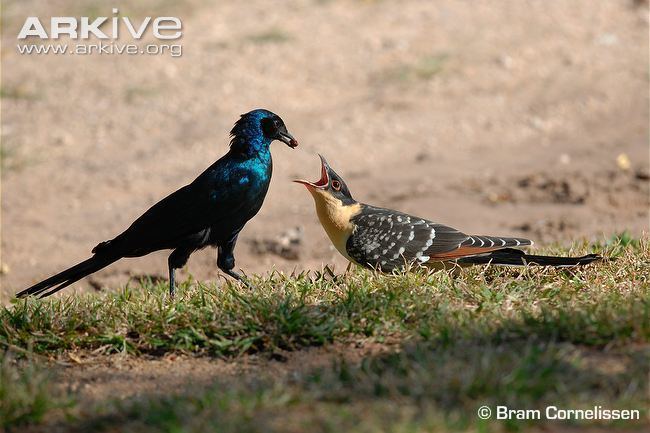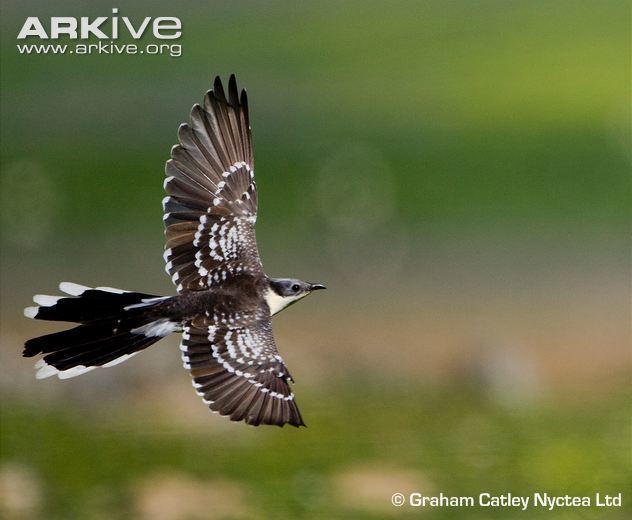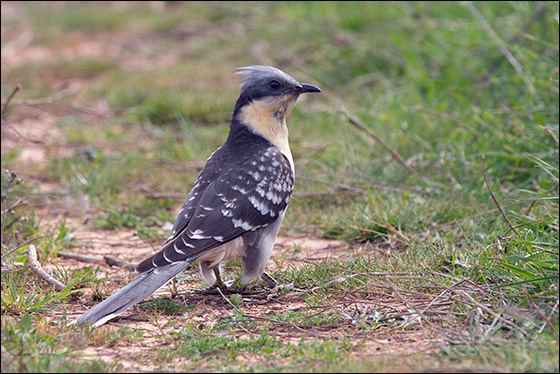Phylum Chordata Rank Species | Family Cuculidae Higher classification Clamator Order Cuculiformes | |
 | ||
Similar Greater short‑toed lark, Lesser short‑toed lark, Caspian plover, Black‑eared wheatear, Eastern olivaceous warbler | ||
Great spotted cuckoo dorset may 2016
The great spotted cuckoo (Clamator glandarius) is a member of the cuckoo order of birds, the Cuculiformes, which also includes the roadrunners, the anis and the coucals. The genus name clamator is Latin for "shouter" from clamare, "to shout". The specific glandarius is derived from Latin glans, glandis, "acorn".
Contents

It is widely spread throughout Africa and the Mediterranean Basin. It is a brood parasite that lays its eggs in the nests of corvids, in particular the Eurasian magpie.

Great spotted cuckoo clamator glandarius
Chicks
Unlike the common cuckoo, neither the hen nor the hatched chick of this species evict the host's eggs, but the young magpies often die because they cannot compete successfully with the cuckoo for food. However it has been shown that this species' chicks secrete a repellent scent when predators threaten. The repellent protects great spotted cuckoo chicks themselves as well as the host's chicks from predators. Carrion crow (Corvus corone corone) chicks survive better if a great spotted cuckoo chick shares their nest. Birds of prey and feral cats less frequently predate crow's nests that include a great spotted cuckoo chick. Crow chicks benefit only when predators are very active; when there is less predation, losing food to great spotted cuckoo chicks harms the crow chicks without compensation.
Adults

This species is slightly larger than the common cuckoo at 35–39 cm (14–15 in) in length, but looks much larger with its broad wings and long narrow tail. The adult is grey above with a slender body, long tail and strong legs. It has a grey cap, grey wings, a yellowish face and upper breast, and white underparts. Sexes are similar. The juveniles have blackish upperparts and cap, and chestnut primary wing feathers. This species has a magpie-like flight.
It is a bird of warm open country with trees. Its food is insects, spiders, small reptiles and hairy caterpillars, which are distasteful to many birds, are a specialty.
The great spotted cuckoo's call is a loud cher-cher-kri-kri and variations.

